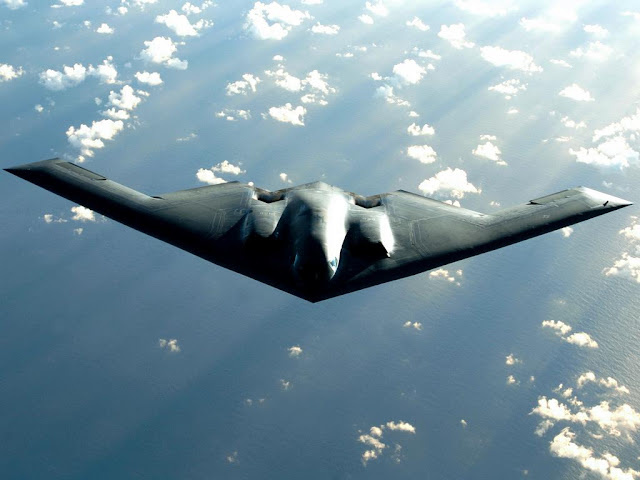Advertisemen
A report by the U.S. Air Force 2010 over a fire in a Northrop Grumman B-2 bomber says firefighting equipment in Guam were not familiar with the exhaust of the aircraft or fire potential tailpipe.The report of May 26, 2010 , but only recently posted on the website of the USAF , attributed the fire to the aircraft design and inadequate flight manuals , but draws attention to deficiencies in training firefighting equipment at Andersen Air Base in Guam.
Northrop Grumman B-2 Bomber Inflight
It is said that these defects probably resulted in additional damage to the aircraft around $ 1.7 billion , requiring $ 64.4 million in repairs for nearly four years.
Two fire chiefs in Guam told the USAF "did not know that there was a bay exhaust , and had no knowledge that there was a potential fire within it ," says the report.
The USAF did not immediately reply to questions about why firefighters were ill prepared , or measures taken to improve training.
The fire began on February 26, 2010 , after the crew began the four General Electric F118 engines of the aircraft, and then shut one down after a problem generator.
During the restart , " reverse air flow " , possibly caused by the engine off , took fuel vapor in the exhaust pipe , the report said . The vapor lights , which lit the oil soaked foam in the bay exhaust , according to the report.
Firefighters containing flame after 26min , but apply less than 5% of the 34,000 gallons of quench fluid into the exhaust pipe . That was where the fire was hottest, at approximately 1000 ˚ F , the report says.
"There were delays in putting the agent in the fire originated in the bay of the exhaust pipe , which allowed the fire to burn longer and there was an increase in damage ," says the USAF . "Nobody in the fire department Andersen AFB was familiar with B-2 bays tailpipe . "
The USAF also recently released a report about a second incident of land B-2, which occurred on July 8, 2011 at Whiteman AFB in Missouri. Crew error contributed to the incident , which involved overheating of aircraft pitot system , according to the report.
Overheating occurred because the heat pitot static switch is placed in the "on" position for 67min , while the aircraft was grounded power fuel during a procedure - download the report says.
"This action was a clear error method and a causal factor in the accident ," the report says. "This switch must be in the off position before connecting to external power . "
The USAF says that it could not determine which member of the crew turned on the switch, but notes that it could have been confused with adjacent switch defogging windshield , which must be set to " min " while in the power field. Overheating damaged all 24 units transducers aircraft static port and two panels on which are mounted units , says the USAF.
Advertisemen

